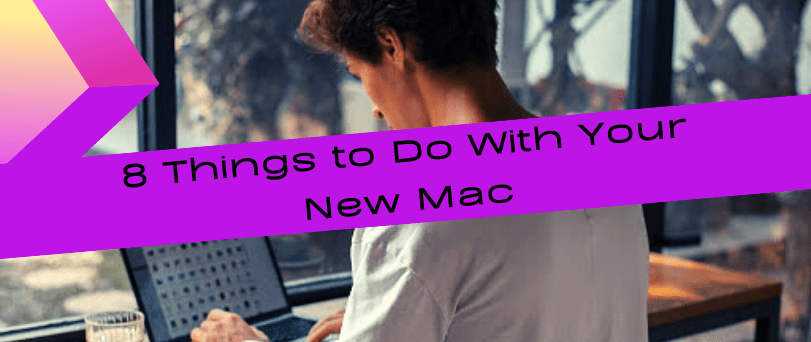Congratulations on your new Mac! If you are new to Macs or you upgraded from an older device, this short guide will help you set up your new computer so that you can get the most out of it.
Here are eight things you should do immediately after you get a new MacBook.
1. Use Time Machine to back up your data
If you’ve already had a Mac before, you know what Time Machine does – it backs up all your data automatically and regularly. Now, on the other hand, if you’re new to MacBook, using Time Machine for the first time might seem daunting.
But it is actually pretty easy to set up if you follow the on-screen instructions. You should get an external hard disk that can store as much data as the storage disk capacity on your laptop. It’s important you use an external disk instead of storing it on the hard disk because this will allow you to keep your data safe and migrate to a new system if needed.
If you leave the external drive plugged in, Time Machine will back up your files automatically.
2. Set up iCloud
iCloud is Apple’s cloud storage platform and is quite handy when you want to store files to the cloud and sync your files across all your Apple devices.
It is free to set up an iCloud account, and you also get 5GB free of cloud storage. For more storage, you need to have a paid subscription.
You need to set up an Apple ID and password to use your MacBook and download apps from the Mac App Store.
3. Try the ‘Help’ menu
The laptop does not ship with a product manual. Not because it’s straightforward to use, but because there is a Help menu integrated into each that allows you to troubleshoot any issues you may be having.
4. Speed up your Mac
If you have been using your MacBook for a while and notice that it has slowed down, you can do a few things to improve the speed.
Get into the habit of shutting down your computer when you’re done with it. Leaving it on sleep can cause apps and processes to continue running in the background, which slows down your Mac.
Your browser may also be slowing you down. You can disable extensions on your browser and enable them one by one to figure out what is slowing down your Mac. Another thing you can do is clear cache and cookies on mac. The cache is usually stored on your browser and apps so that it’s easier for you to switch between apps and load web pages. But these can also be problematic since they hog up your processing power.
5. Go to the Mac App Store
The Mac App Store is where all the Apple apps and third-party apps live. These apps undergo rigorous testing and are privacy compliant, so you don’t have to worry about your data’s security or user privacy.
If you choose to download an app off the web, make sure you trust it before running it on your system. You will get a warning when you try to install the .dmg file, but you can ignore it if you’re entirely sure about the app’s safety and privacy.
6. Set up the Mail app
The Mail app allows you to add all your inboxes in one place. This is particularly useful if you have a bunch of email addresses and spend too much time clearing your inbox. If you don’t like the Mail app, you can get a Gmail client and view your emails there instead.
7. Get familiar with Spotlight
Spotlight is a search tool that helps you find and launch apps, open emails, find files, and documents and tell you things like the weather, and sports scores and perform calculations. Essentially, Spotlight can perform local and web searches.
To access Spotlight, you can go to the menu bar on the top and click on the magnifying glass, or better yet, learn this keyboard shortcut: Command + Space Bar.
You can get rid of antivirus-related popups in simple steps. find more about how to stop mcafee pop ups
8. Get to know the Dock
If you are an ex-Windows user, you will notice a difference in how apps live on the Mac. Your most-used apps or open apps move to the Dock. By default, it is on the bottom of the screen, but you can move it to the left or right.
You can customize your Dock only to have apps that you need and use on a daily basis. It is also easy to quit apps from the Dock without having to open the app. If an app misbehaves, you can also ‘Force Quit the app from the Dock.
If the Dock bothers you or the app notifications hinder your productivity, you can also hide the Dock.
Focus on the basic setup
There are plenty of other advanced features that you can use to streamline your usage, like Screen Time, Activity Monitor, and optimizing your storage. But, once you get the hang of the basic features, you will find it easy to try out the other complex features.

